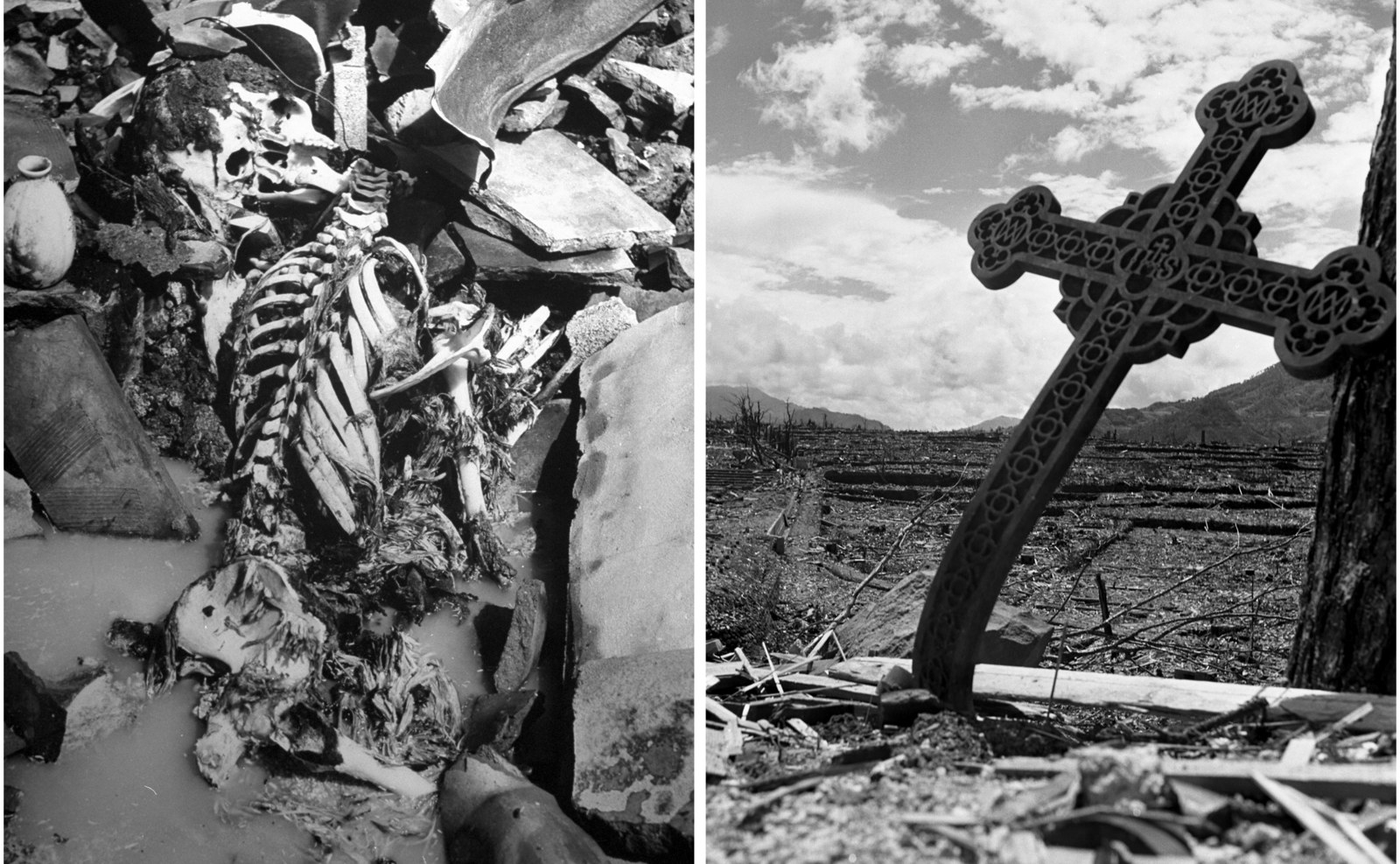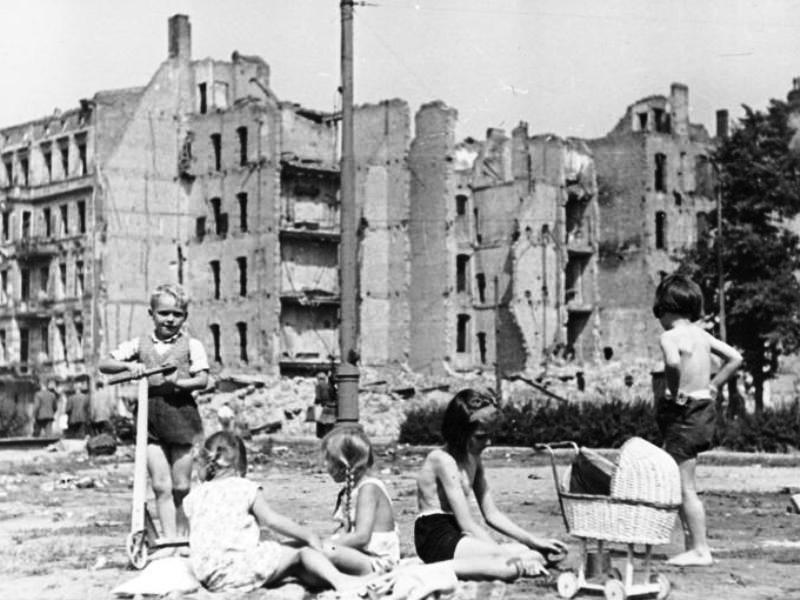
Homeless German children barter and beg: Young children sold or bartered whatever they could to survive on the streets of Berlin. After the reunification of Germany, the church was restored for $175 million. The Dresden Frauenkirche, a Lutheran church, was an exception, as its decaying ruins were left untouched. Following the war, the ruins were cleared and replaced by modern structures. Eight square miles of Dresden, which had boasted some of the most beautiful baroque architecture in Europe, were destroyed when Allied bombers dropped more than 5,000 tons of high explosives and incendiary bombs on the city in February 1945.

Dresden was one of the hardest hit cities. German cities clean up, rebuild: During the war, approximately 50 percent of Nazi Germany's infrastructure was destroyed. Communist states in the east soon arose to confront the western democracies. In the east, the Soviets expanded their borders at the expense of Germany, Finland, and Poland, and annexed the Baltic countries of Latvia, Estonia, and Lithuania. The Allied Zones merged into the Federal Republic of Germany in 1949, while the Soviet occupied zone became the German Democratic Republic. Germany was partitioned into four zones of occupation. Millions became refugees as national boundaries were redrawn. Postwar Europe's new boundaries are drawn: Nazi Germany's collapse in 1945 transformed the face of Europe. The news stories and images below reflect how World War II affected worldwide politics and culture in 19. November 3, 1946: A new Japanese constitution, one that resolves that the nation will never again "be visited with the horrors of war through the action of government," is proclaimed by Emperor Hirohito.ĭecember 31, 1946: Harry Truman issues a presidential proclamation declaring an official end to World War II.įebruary 17, 1947: The United States launches The Voice of America, a pro-West radio station, to broadcast to the Soviet Union and Eastern Europe. Göring will escape this fate by taking his own life shortly before his scheduled execution. October 1, 1946: High-ranking Nazi officials, including Hermann Göring, Hans Frank, Joachim von Ribbentrop, and Arthur Seyss-Inquart, are sentenced to hang by the Allied court at Nuremberg.

July 16, 1946: Forty-three members of the Waffen-SS are sentenced to death for the December 1944 Malmedy massacre of American POWs during the Battle of the Bulge. July 4, 1946: Fueled by a false kidnapping allegation, a pogrom in Kielce, Poland, claims the lives of some 40 Jews. A second detonation, code-named "Baker," will follow on the 25th.

July 1, 1946: The United States detonates a plutonium bomb, "Able," off Bikini Atoll, as part of Operation Crossroads, an effort to learn more about the power of the atomic bomb.


 0 kommentar(er)
0 kommentar(er)
